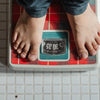14+ Keto Diet Side Effects: What They Mean and How to Manage Them

From bad breath to insomnia, and even feeling like you have the flu, most side effects of the ketogenic diet are short-lived and completely manageable.
If you want to know how to address that one particular issue, or are simply wondering what’s up with another, there’s an explanation (and a solution) for just about every common symptom of the ketogenic diet.
What Causes Ketogenic Diet Side Effects?
As the ketogenic diet rises in popularity, so too does the amount of media attention surrounding it— both positive and negative. But there are still plenty of documented side effects that can be a real cause for concern for anyone experiencing them.A side effect isn’t necessarily a sign that keto is unhealthy or the wrong diet for you. A side effect is really your body’s way of telling you what it needs.
How to Reduce the Likelihood of Experiencing Side Effects
If you’re coming from a “standard” or higher carb diet, quitting carbs cold turkey is going to have a more profound initial effect on your body.This is because your body likely isn’t yet fat-adapted, so it might be a little shocked at what’s happening to it. Not to mention the potential sugar withdrawals.
You may want to slowly taper down your carb intake each day to reduce the shock to your body, rather than just going all in.
Don’t stress about cutting your calories and becoming fat-adapted at the same time. Focus on getting used to following a keto diet and keeping your carbs adequately low for about a week. Once you’ve nailed that, you can adjust your calories to a deficit to lose weight on keto.
14 Common Keto Diet Side Effects
Doing everything right but still experiencing unpleasant side effects? Take a look at the list below to figure out why it’s happening and what your body’s trying to tell you.
#1: Flu-Like Symptoms
Sounds like you’ve got the keto flu. It’s kind of like having a hangover, minus the fun night of drinking.Symptoms last from a couple of days to a week. They tend to be more intense if you’ve switched to keto from a diet that’s high in carbohydrates. Some people even experience the keto flu when they get “kicked out” of ketosis from eating too many carbs.
These symptoms can be caused by electrolyte deficiency and sugar withdrawals. This is possibly due to the inflammatory nature of carbs and sugar, which your fat-adapted body may not be used to yet.
Switching from being a sugar burner to a fat burner is hard work for your body.
What you can do:
- New to keto? Take it easy for the first couple of weeks. Don’t worry about restricting calories, and don’t expect amazing performance in the gym.
- Make sure you’re getting enough electrolytes, drinking enough water, and eating enough fat. You can supplement electrolytes or take BHB to fix it.
- Got kicked out of ketosis? Forget trying to do a 16 hour fast or an intense HIIT session. Just keep calm and keto on.
#2: Keto Hair Loss
There’s no definitive research that explains the connection between hair loss and keto, but it’s still a commonly reported side effect.Stress and malnutrition — particularly micronutrient and protein deficiency — are common triggers for hair loss.
People who lose a significant amount of weight can sometimes experience hair loss, so it’s possible your weight loss journey may be more to blame than keto itself.
What you can do:
- Make sure your fat sources are from a whole foods diet rich with micronutrients or consider taking a multivitamin or greens powder daily.
- Track your food to see if you’re getting enough protein every day.
- Get more collagen. Collagen can help strengthen and grow hair. You can get collagen from a collagen supplement like Keto Collagen or by drinking bone broth.
- Stress less! Staying keto can be challenging, but try not to get too caught up in being perfect.
#3: Weight Gain on Keto
Keto is touted as the secret to weight loss, but some people do gain weight on keto.High-fat foods help to trigger satiety and reduce appetite, however, they’re also delicious.
If your appetite doesn’t decrease when you’re full, then you could be subject to overconsumption of these high-fat foods. Since fat has more calories per gram than carbohydrates, you may need to give your body a few weeks to adjust ghrelin levels and reduce cravings.
Weight gain can also be attributed to a lack of sleep, which has been shown to decrease insulin sensitivity and potentially lead to increased fat storage[*].
What you can do:
- Track your calories to make sure you’re not over-consuming food. Do you really need bacon, avocado, eggs, and a bulletproof coffee for breakfast?
- Try intermittent fasting. Start slowly by moving your breakfast 15 minutes later each day. Many ketogenic dieters find that intermittent fasting is a super-easy way to kickstart their weight loss and control their caloric intake.
- Get plenty of rest each night to increase insulin sensitivity and stave off those sleepy carb cravings.
#4: Rapid Weight Loss
Weight loss isn’t always the goal for everyone. And for those who are trying to lose a few pounds, it’s fat you want to lose, not lean body mass (muscle).If you’re losing weight too rapidly (more than 1-2 pounds per week if you started off with a normal BMI), chances are that at least a portion of that weight is muscle.
If this is the case for you, you’re likely not eating enough calories due to how satiating fat is. If you’re losing muscle specifically, you might not be eating enough protein.
It’s true that it’s tough to keep up your gym routine when you’re adapting to a low-carb diet, so it’s fine to take a break, but if you’re not building muscle, try to take other measures to reduce the rate at which you are losing.
What you can do:
- If you want to increase your calories, try having a couple of high-fat keto snacks throughout the day, like fat bombs or keto coffee. That’s right— drink your calories.
- Make sure you’re eating enough protein, especially if you lift weights.
#7: Keto Sleep Issues & Insomnia
Experiencing boundless, fat-fuelled energy is all well and good until you’re trying to sleep.Ketones are an energy source, so it makes sense that you’d feel more energized than usual. This is especially true if you’re eating high-fat meals or snacks close to bedtime. Not only is your body still working hard to digest food, but you’ve just provided it with a little energy boost.
One study found that eating a high-carbohydrate meal either one or four hours before bedtime helped to shorten the amount of time taken to fall asleep[*]. This is because carbs help to increase tryptophan, which is a precursor to the sleep-inducing hormone serotonin.
If your pre-keto diet dinner was based around carbs, then it makes sense that removing them might cause sleep issues.
Read Also: Keto Sleep: Common Issues & How to Fix Them
What you can do:
- Avoid eating high-fat food too close to bedtime
- Save the majority of your carbohydrates for dinner
#6: Feeling Dizziness on Keto
Dizziness may be caused by electrolyte imbalances. Lack of sodium is known to cause dizziness[*], especially if you’re working out regularly and sweating out a decent amount of it. There’s a reason so many people on keto swear by salting their water.But before you start chugging the keto-ade, make sure you’re not overdoing the electrolytes, either. Consuming too many electrolytes — especially potassium — can be dangerous, though rare.
Read Also: Your Guide to Keto Electrolytes: Sources & Symptoms.
It’s also possible you’re under-consuming calories due to how satiating fat can be. Make sure you’re getting in enough calories to keep you energized and alert.
What you can do:
- Make sure your electrolytes aren’t too low or too high, especially potassium. Watch the Lite Salt and collard greens.
- Track your calories for a day to make sure you’re eating enough.
#7: Irregular Menstrual Cycles
Many women make the decision to try the ketogenic diet to fix their hormonal issues. There are tons of success stories of ketogenic dieters regulating their cycles with keto.However, there are some people who experience irregular menstrual cycles when they start keto.
Hormonal problems on keto are often associated with weight loss. When you lose weight, your body releases hormones stores in your fat. This can cause all kinds of hormonal shifts in the body, including irregular periods or mood swings.
Luckily, many women find that their periods return to normal (or even better than ever) after about three months. Some women also function better on keto with higher carbohydrate intake.
What you can do:
- First of all, if your period is late, take a pregnancy test.
- Make sure you’re eating enough fat. Your body needs cholesterol from fat to make hormones.
- You may benefit from increasing your carbs to 30g per day or experimenting with cyclical ketosis. This involves regular “carb-ups” once every week or two, or even just around your period.
#8: Dehydration and Extreme Thirst
If you’re thirstier than ever but can’t seem to quench it no matter how much water you drink, you’re probably lacking sodium or electrolytes. Sodium’s job is to regulate water in the body, so not enough can make you thirstier.When you start a ketogenic diet, your body taps into the glycogen stores in your muscles for quick energy because it’s not getting the sugars from your diet.
Glycogen holds onto water; so when you use up that glycogen, out goes excess water with it.
This is one reason why many people experience the keto flu, muscle cramps, and other electrolyte issues.
What you can do:
- Add a pinch of Himalayan pink sea salt to your meals and even your water. This is super important if you work out and are sweating out even more of that precious sodium.
- Take an electrolyte supplement to replenish those electrolyte stores.
#8: Indigestion, Diarrhea or Constipation
Whether it’s stomach cramps, constipation, or something way worse, bathroom problems are never a welcome side effect of any lifestyle change.If you’re experiencing this on keto, these symptoms may be the result of too much fat or not enough fiber in your diet.
Some keto-friendly foods like MCT oil and sugar alcohols can also cause digestive issues.
In the case of MCT oil, this happens most often with people who are taking too much, too soon and are new to the oil. It’s a highly ketogenic oil and bypasses the digestive system to be quickly converted into ketones. Luckily, this is easy to fix: scale back to ½ a serving per day until you’re used to it. Then scale back up.
Read Also: MCT Oil: 5 Proven Benefits (& How to Get Them)
Sugar alcohols are known for causing bloating and digestive issues.
What you can do:
- Ease up on the added fat if you’re experiencing loose bowels.
- If you’re constipated, make sure you’re getting plenty of fiber in your diet and maybe even increase fats.
- Try swapping out sugar alcohols for a natural keto sweetener.
- Make sure you’re only using a high-quality MCT oil.
#9: Increased Urination
This may be a sign that you’re losing weight. As your fat cells shrink, they lose water which is then excreted. This is what people call a “whoosh”— because it comes whooshing out of you kind of unexpectedly.The whoosh is usually partly due to water loss, rather than all fat loss. So while it’s nice to see progress on the scale, know that it’s not all fat.
Needing to pee all the time can be a sign that your electrolytes are imbalanced. This can even be caused by drinking too much water, which flushes electrolytes from the body.
What you can do:
- Make sure you’re getting enough electrolytes
- Drink to quench your thirst, but don’t flood your body with more water than you need
- Wait it out. Your body may adjust.
#10: Extreme Sugar and Carb Cravings
It sucks, but it’s one of those inevitabilities:If you’re switching from a sugar-laden or high-carb diet to a low-carb ketogenic diet, you will almost definitely experience cravings for high-carb or starchy foods.
This is partially what some people might consider “sugar withdrawal”, but it’s likely also due to habit! When you’re used to reaching for low-fat, high-carb foods to satisfy your hunger, your brain expects the same until it adjusts.
Even keto sweeteners can trigger sugar cravings. After all, your body is tasting sweet, but it’s not getting that usual blood sugar spike.
Lack of sleep and way-too-steep calorie deficits can also cause your body to crave quick hits of energy from carbohydrates.
What you can do:
- Try cutting out sweeteners for 30 days. You’ll be amazed at how much your palate changes.
- Recreate keto-friendly versions of your favourite desserts and dishes to satisfy cravings. Check out our massive list of keto dinner recipes and desserts. Or just grab a box of Keto Indulge.
- Get enough sleep, and make sure you’re eating enough.
#11: Keto Breath & Body Odour
Bad breath and a metallic taste in your mouth? Weird smells coming from your armpits— or worse?This unpleasant side effect is caused by your body excreting either ammonia from consuming high amounts of protein (thanks, bacon), or ketones.
As your body becomes more efficient at utilising those ketones for energy, you’ll excrete less of them.
What you can do:
- Wash regularly, use a good deodorant, and chew gum or drink peppermint tea.
- Wait it out. Don’t worry, this side effect doesn’t last long to clear up.
#12: Muscle Cramps & Charlie Horses
This is another unfortunate symptom of the ketogenic diet that has a familiar culprit: electrolyte deficiency.Specifically, magnesium. This electrolyte is responsible for regulating muscle contractions. Don’t be surprised if you wake up in the middle of the night with leg cramps from skimping on the magnesium.
What you can do:
- Make sure you’re getting 400mg of magnesium each day.
- If your muscles are still sore, use a topical magnesium spray or cream.
#13: Keto Rash
Keto rash is a term coined to describe a skin condition that some people experience after going into ketosis.Symptoms include itchy, red skin usually on the chest, back and neck. It might come and go, or it may be more persistent and hang around for weeks or even months.
Here’s the thing: No one really knows what causes “keto rash”. It has been connected to the skin condition Prurigo Pigmentosa, but it’s worth noting that there’s no official known cause for this condition, either[*].
Anecdotally, some people find it’s triggered by sweat. The only thing that’s for certain is it’s connected to being in ketosis.
What you can do:
- Many people who experience keto rash find that it eventually goes away on its own.
- Raising your daily carbs to between 20-30g per day may alleviate symptoms.
- Some people have found success going out of ketosis until the rash clears, then gradually easing back into ketosis.
- A chemist may be able to recommend a topical treatment.
#14: Low Tolerance for Alcohol
Becoming sensitive to alcohol comes with the keto territory. When you’re in ketosis, alcohol hits your bloodstream a lot faster.Did your grandma ever tell you to “line your stomach” with bread before a night of drinking? She may have been on to something. Having a high carbohydrate meal has been shown to significantly reduce blood alcohol levels[*]. This is because glycogen is effective at absorbing alcohol so that less of it can make it to your blood.
When you’re in ketosis, there’s much less glycogen to help absorb that alcohol, so your tolerance will be way lower. Congratulations, you’re now a cheap drunk.
What you can do:
- Limit yourself to just a couple of drinks, or at the very least, pace yourself. Your liver will thank you. So will your bank account.
A Final Takeaway on Keto Side Effects
When you eat a keto diet, you become more attuned to your body’s signals and knowing what it is that you need to thrive. This might mean paying a little more attention to what you eat, but the positive benefits are well worth the benefit.Don’t just restrict your carbs. Make sure you’re getting enough fat, protein, electrolytes, and calories, as well as micronutrients from whole foods. Yes, you can eat vegetables on keto. Lots of them. Smothered in butter, if you like. In other words, eating in a way that nourishes your body.
-
Posted in
Authority Article, Keto Side Effects, Ketosis, Nutrition, Nutrition Article, Starting Keto




